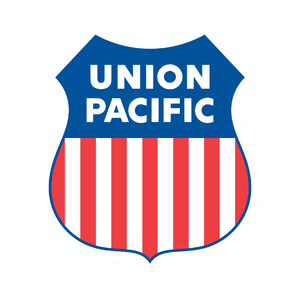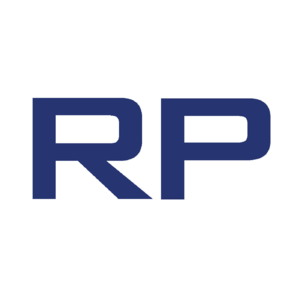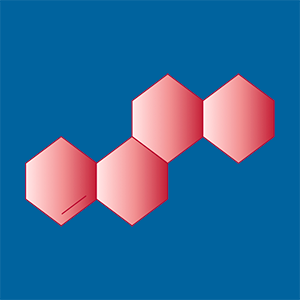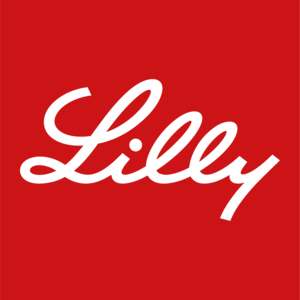
Eli Lilly (LLY)
Not many stocks excite us like Eli Lilly. Its impressive sales growth and high returns on capital tee it up for fast and profitable expansion.― StockStory Analyst Team
1. News
2. Summary
Why We Like Eli Lilly
Founded in 1876 by a Civil War veteran and pharmacist frustrated with the poor quality of medicines, Eli Lilly (NYSE:LLY) discovers, develops, and manufactures pharmaceutical products for conditions including diabetes, obesity, cancer, immunological disorders, and neurological diseases.
- Annual revenue growth of 36.1% over the last two years was superb and indicates its market share increased during this cycle
- Earnings per share grew by 29.5% annually over the last five years and trumped its peers
- Expected revenue growth of 26% for the next year suggests its market share will rise


Eli Lilly is a remarkable business. The valuation seems fair when considering its quality, and we believe now is a good time to buy the stock.
Why Is Now The Time To Buy Eli Lilly?
High Quality
Investable
Underperform
Why Is Now The Time To Buy Eli Lilly?
At $1,078 per share, Eli Lilly trades at 34.2x forward P/E. While this multiple is higher than most healthcare companies, we think the valuation is fair given its quality characteristics.
Entry price certainly impacts returns, but over a long-term, multi-year period, business quality matters much more than where you buy a stock.
3. Eli Lilly (LLY) Research Report: Q3 CY2025 Update
Global pharmaceutical company Eli Lilly (NYSE:LLY) reported Q3 CY2025 results topping the market’s revenue expectations, with sales up 53.9% year on year to $17.6 billion. The company’s full-year revenue guidance of $63.25 billion at the midpoint came in 2.6% above analysts’ estimates. Its non-GAAP profit of $7.02 per share was 18.6% above analysts’ consensus estimates.
Eli Lilly (LLY) Q3 CY2025 Highlights:
- Revenue: $17.6 billion vs analyst estimates of $16.06 billion (53.9% year-on-year growth, 9.6% beat)
- Adjusted EPS: $7.02 vs analyst estimates of $5.92 (18.6% beat)
- The company lifted its revenue guidance for the full year to $63.25 billion at the midpoint from $61 billion, a 3.7% increase
- Management raised its full-year Adjusted EPS guidance to $23.35 at the midpoint, a 4.4% increase
- Operating Margin: 41.8%, up from 13.3% in the same quarter last year
- Market Capitalization: $730.3 billion
Company Overview
Founded in 1876 by a Civil War veteran and pharmacist frustrated with the poor quality of medicines, Eli Lilly (NYSE:LLY) discovers, develops, and manufactures pharmaceutical products for conditions including diabetes, obesity, cancer, immunological disorders, and neurological diseases.
Eli Lilly's product portfolio spans several major therapeutic areas. Its diabetes and obesity medications include insulin products like Humalog and Humulin, as well as newer treatments like Mounjaro for type 2 diabetes and Zepbound for obesity. These GLP-1 receptor agonists have become significant growth drivers for the company due to the massive addressable markets. In oncology, Lilly markets treatments such as Verzenio for breast cancer and Retevmo for certain lung and thyroid cancers. The company's immunology portfolio includes Taltz for psoriasis and psoriatic arthritis, while its neuroscience offerings feature Emgality for migraine prevention.
Lilly generates revenue primarily through prescription drug sales to wholesalers, who then distribute to pharmacies, hospitals, and other healthcare facilities. The company maintains its own sales force in most countries, supplemented by contract sales organizations in some markets. In the U.S., three major wholesalers—McKesson, Cencora (formerly AmerisourceBergen), and Cardinal Health—account for a significant portion of Lilly's consolidated revenue.
Lilly operates globally, with manufacturing facilities in the United States (including Puerto Rico), Europe, and Asia. The company sells its products in over 100 countries, adapting its marketing approaches to meet local needs and regulatory requirements.
4. Branded Pharmaceuticals
Looking ahead, the branded pharmaceutical industry is positioned for tailwinds from advancements in precision medicine, increasing adoption of AI to enhance drug development efficiency, and growing global demand for treatments addressing chronic and rare diseases. However, headwinds include heightened regulatory scrutiny, pricing pressures from governments and insurers, and the looming patent cliffs for key blockbuster drugs. Patent cliffs bring about competition from generics, forcing branded pharmaceutical companies back to the drawing board to find the next big thing.
Eli Lilly's main competitors include other large pharmaceutical companies such as Novo Nordisk (NYSE:NVO), particularly in the diabetes and obesity markets, Pfizer (NYSE:PFE), Merck (NYSE:MRK), Johnson & Johnson (NYSE:JNJ), AbbVie (NYSE:ABBV), and Bristol Myers Squibb (NYSE:BMY).
5. Economies of Scale
Larger companies benefit from economies of scale, where fixed costs like infrastructure, technology, and administration are spread over a higher volume of goods or services, reducing the cost per unit. Scale can also lead to bargaining power with suppliers, greater brand recognition, and more investment firepower. A virtuous cycle can ensue if a scaled company plays its cards right.
With $59.42 billion in revenue over the past 12 months, Eli Lilly is one of the most scaled enterprises in healthcare. This is particularly important because branded pharmaceuticals companies are volume-driven businesses due to their low margins.
6. Revenue Growth
A company’s long-term sales performance is one signal of its overall quality. Any business can put up a good quarter or two, but many enduring ones grow for years. Luckily, Eli Lilly’s sales grew at an impressive 20.7% compounded annual growth rate over the last five years. Its growth surpassed the average healthcare company and shows its offerings resonate with customers, a great starting point for our analysis.
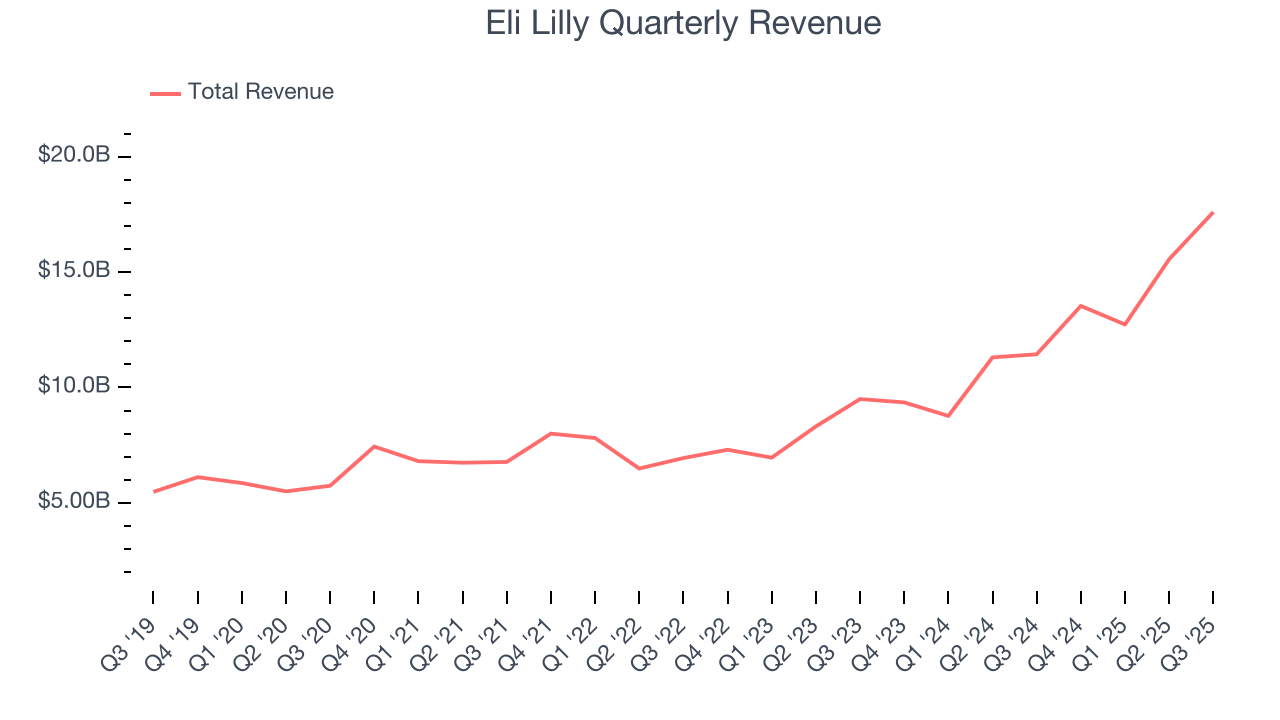
Long-term growth is the most important, but within healthcare, a half-decade historical view may miss new innovations or demand cycles. Eli Lilly’s annualized revenue growth of 36.1% over the last two years is above its five-year trend, suggesting its demand was strong and recently accelerated. 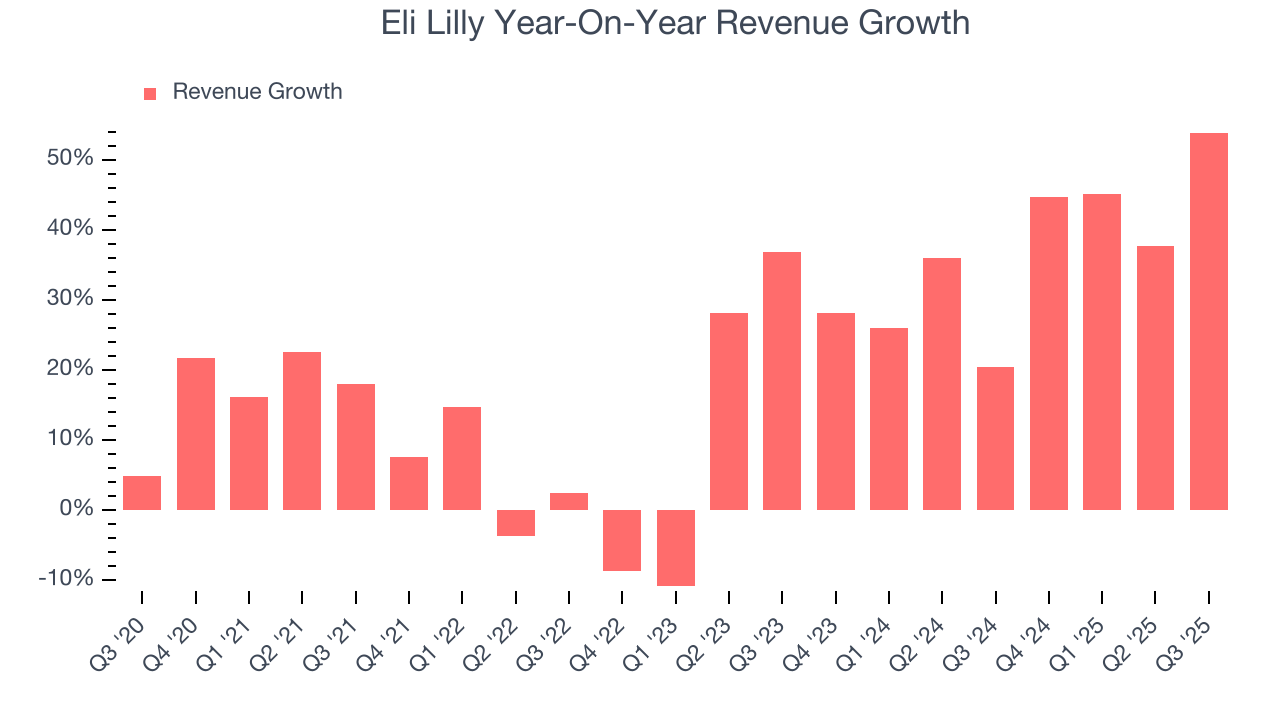
This quarter, Eli Lilly reported magnificent year-on-year revenue growth of 53.9%, and its $17.6 billion of revenue beat Wall Street’s estimates by 9.6%.
Looking ahead, sell-side analysts expect revenue to grow 18.3% over the next 12 months, a deceleration versus the last two years. Still, this projection is eye-popping given its scale and indicates the market sees success for its products and services.
7. Operating Margin
Eli Lilly has been an efficient company over the last five years. It was one of the more profitable businesses in the healthcare sector, boasting an average operating margin of 27.9%.
Looking at the trend in its profitability, Eli Lilly’s operating margin rose by 15.7 percentage points over the last five years, as its sales growth gave it immense operating leverage. This performance was mostly driven by its recent improvements as the company’s margin has increased by 20.4 percentage points on a two-year basis. These data points are very encouraging and show momentum is on its side.
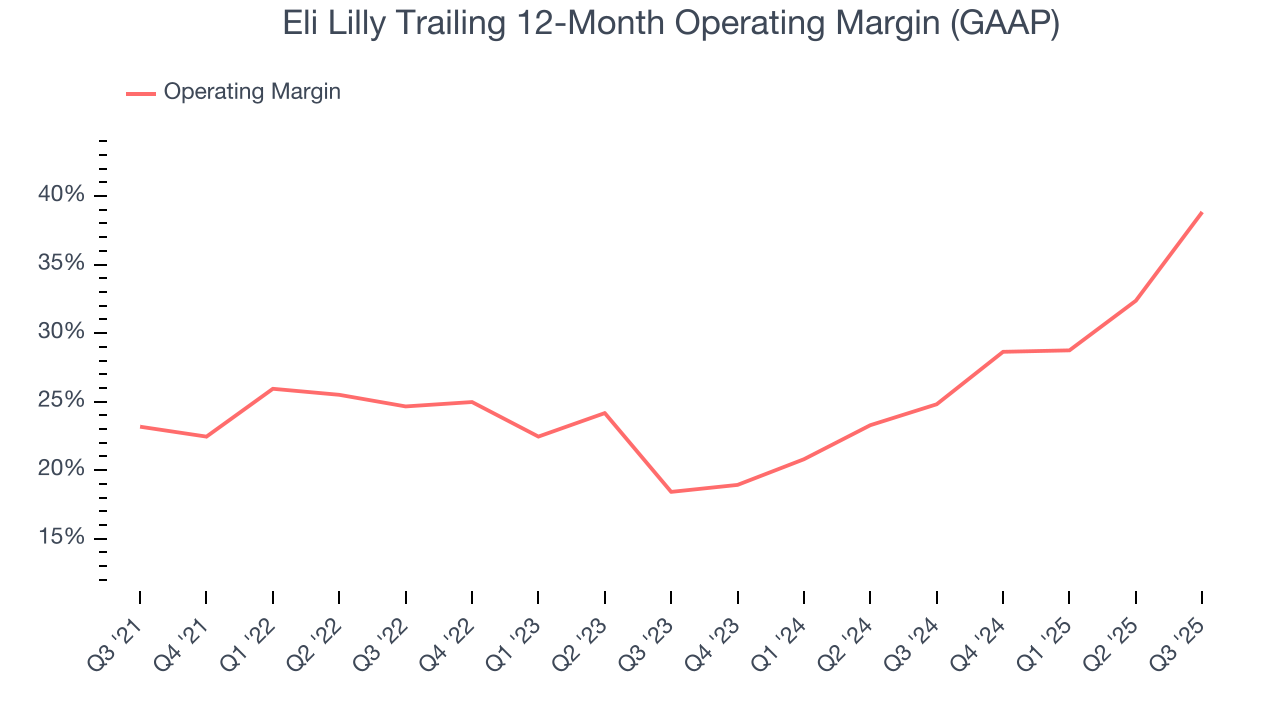
In Q3, Eli Lilly generated an operating margin profit margin of 41.8%, up 28.5 percentage points year on year. This increase was a welcome development and shows it was more efficient.
8. Earnings Per Share
We track the long-term change in earnings per share (EPS) for the same reason as long-term revenue growth. Compared to revenue, however, EPS highlights whether a company’s growth is profitable.
Eli Lilly’s EPS grew at an astounding 29.5% compounded annual growth rate over the last five years, higher than its 20.7% annualized revenue growth. This tells us the company became more profitable on a per-share basis as it expanded.
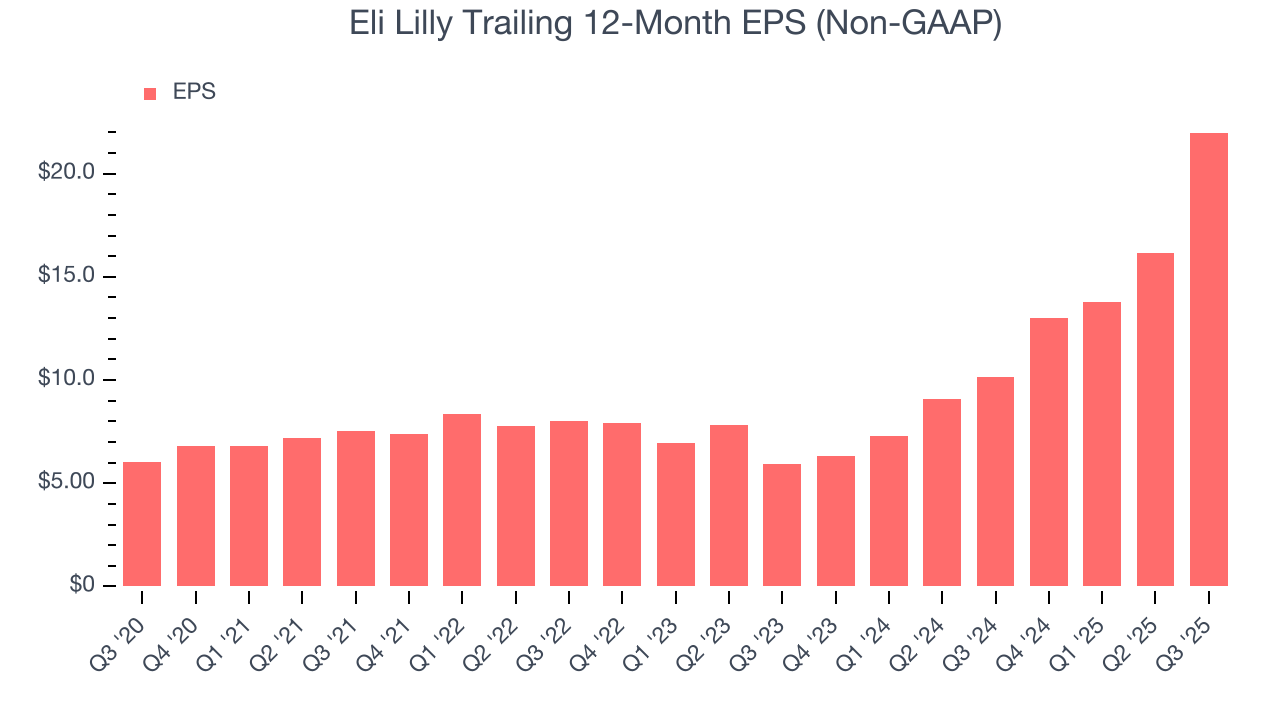
We can take a deeper look into Eli Lilly’s earnings to better understand the drivers of its performance. As we mentioned earlier, Eli Lilly’s operating margin expanded by 15.7 percentage points over the last five years. On top of that, its share count shrank by 1.4%. These are positive signs for shareholders because improving profitability and share buybacks turbocharge EPS growth relative to revenue growth. 
In Q3, Eli Lilly reported adjusted EPS of $7.02, up from $1.18 in the same quarter last year. This print easily cleared analysts’ estimates, and shareholders should be content with the results. Over the next 12 months, Wall Street expects Eli Lilly’s full-year EPS of $21.99 to grow 32.7%.
9. Cash Is King
Although earnings are undoubtedly valuable for assessing company performance, we believe cash is king because you can’t use accounting profits to pay the bills.
Eli Lilly has shown impressive cash profitability, giving it the option to reinvest or return capital to investors. The company’s free cash flow margin averaged 11.1% over the last five years, better than the broader healthcare sector.
Taking a step back, we can see that Eli Lilly’s margin dropped by 13.7 percentage points during that time. If its declines continue, it could signal increasing investment needs and capital intensity.
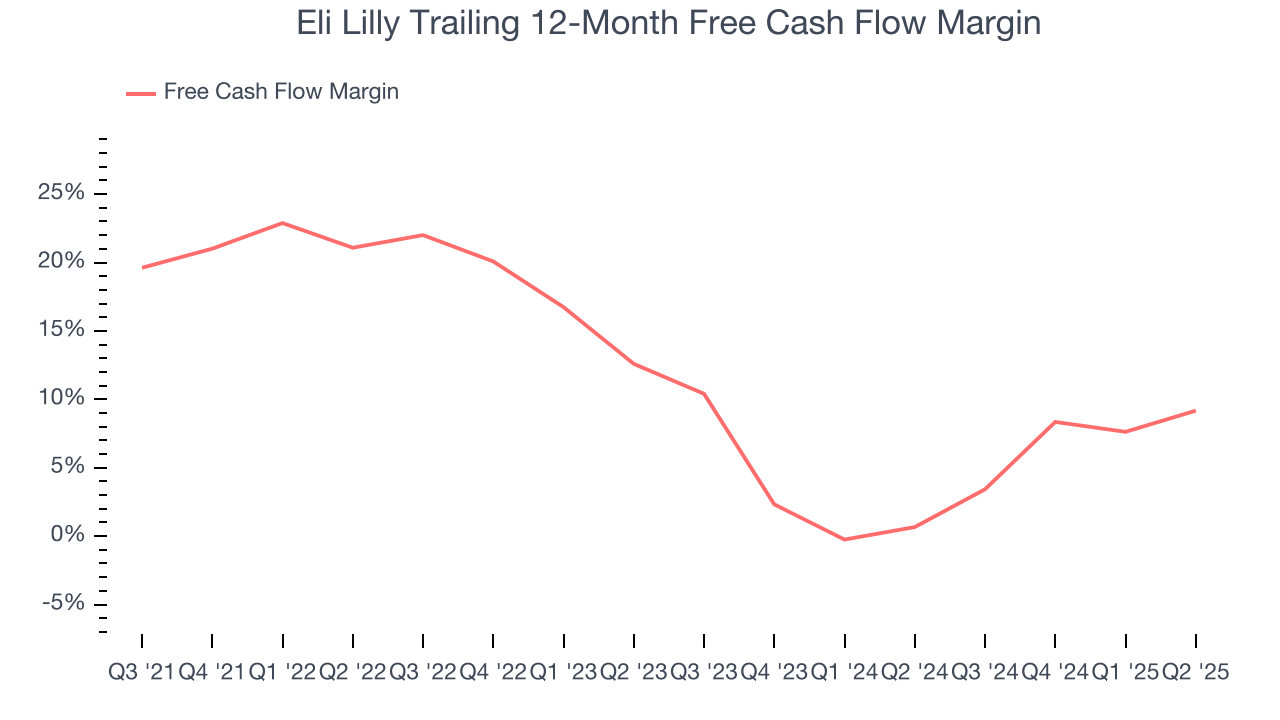
10. Return on Invested Capital (ROIC)
EPS and free cash flow tell us whether a company was profitable while growing its revenue. But was it capital-efficient? Enter ROIC, a metric showing how much operating profit a company generates relative to the money it has raised (debt and equity).
Eli Lilly’s five-year average ROIC was 24.5%, placing it among the best healthcare companies. This illustrates its management team’s ability to invest in highly profitable ventures and produce tangible results for shareholders.
We like to invest in businesses with high returns, but the trend in a company’s ROIC is what often surprises the market and moves the stock price. Over the last few years, Eli Lilly’s ROIC has unfortunately decreased. Only time will tell if its new bets can bear fruit and potentially reverse the trend.
11. Balance Sheet Assessment
Eli Lilly reported $9.91 billion of cash and $42.51 billion of debt on its balance sheet in the most recent quarter. As investors in high-quality companies, we primarily focus on two things: 1) that a company’s debt level isn’t too high and 2) that its interest payments are not excessively burdening the business.
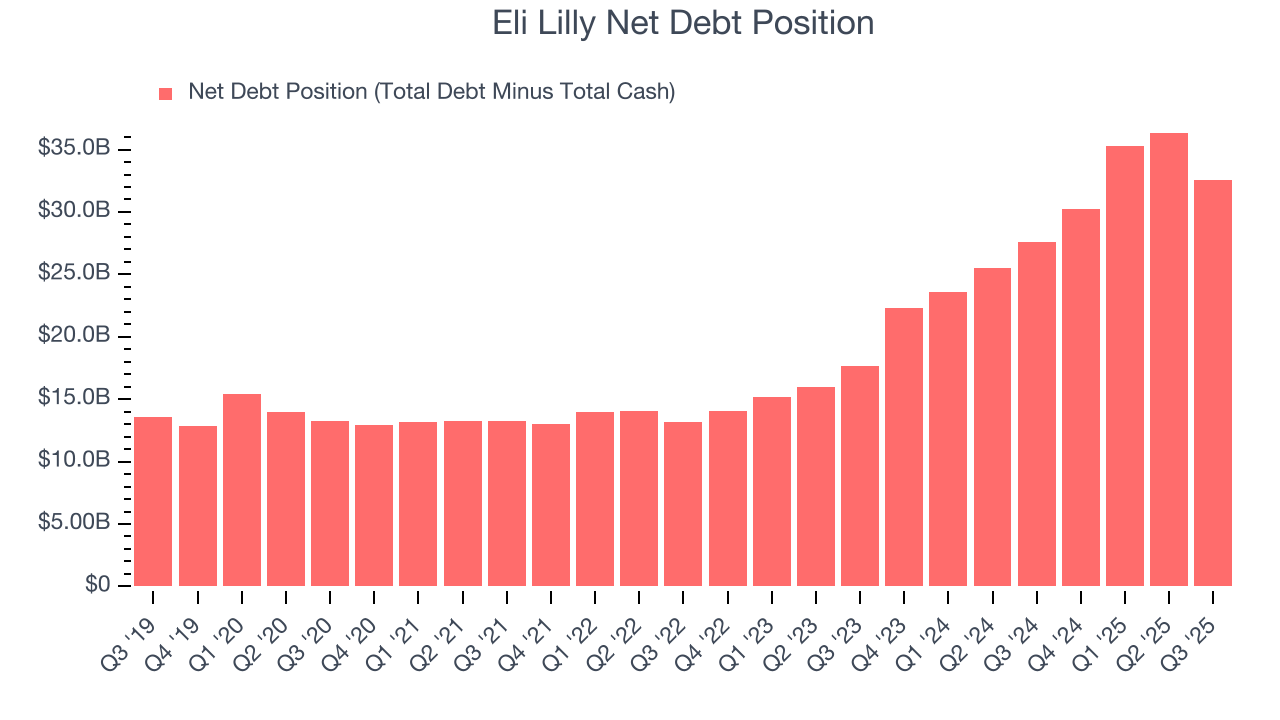
With $25.16 billion of EBITDA over the last 12 months, we view Eli Lilly’s 1.3× net-debt-to-EBITDA ratio as safe. We also see its $699.4 million of annual interest expenses as appropriate. The company’s profits give it plenty of breathing room, allowing it to continue investing in growth initiatives.
12. Key Takeaways from Eli Lilly’s Q3 Results
This was a beat and raise quarter. Specifically, we were impressed by how significantly Eli Lilly blew past analysts’ revenue and EPS expectations this quarter, showing both better-than-expected growth and operating leverage thanks for Zepbound and Mounjaro sales. We were also glad its full-year revenue guidance was lifted and exceeded Wall Street’s estimates. Zooming out, we think this quarter featured some important positives. The stock traded up 5.9% to $861.29 immediately after reporting.
13. Is Now The Time To Buy Eli Lilly?
Updated: December 24, 2025 at 10:44 PM EST
Before deciding whether to buy Eli Lilly or pass, we urge investors to consider business quality, valuation, and the latest quarterly results.
There is a lot to like about Eli Lilly. To begin with, its revenue growth was impressive over the last five years, and its growth over the next 12 months is expected to accelerate. On top of that, its scale makes it a trusted partner with negotiating leverage, and its astounding EPS growth over the last five years shows its profits are trickling down to shareholders.
Eli Lilly’s P/E ratio based on the next 12 months is 34.2x. Looking across the spectrum of healthcare businesses, Eli Lilly’s fundamentals clearly illustrate it’s a special business. We like the stock at this price.
Wall Street analysts have a consensus one-year price target of $1,093 on the company (compared to the current share price of $1,078).
